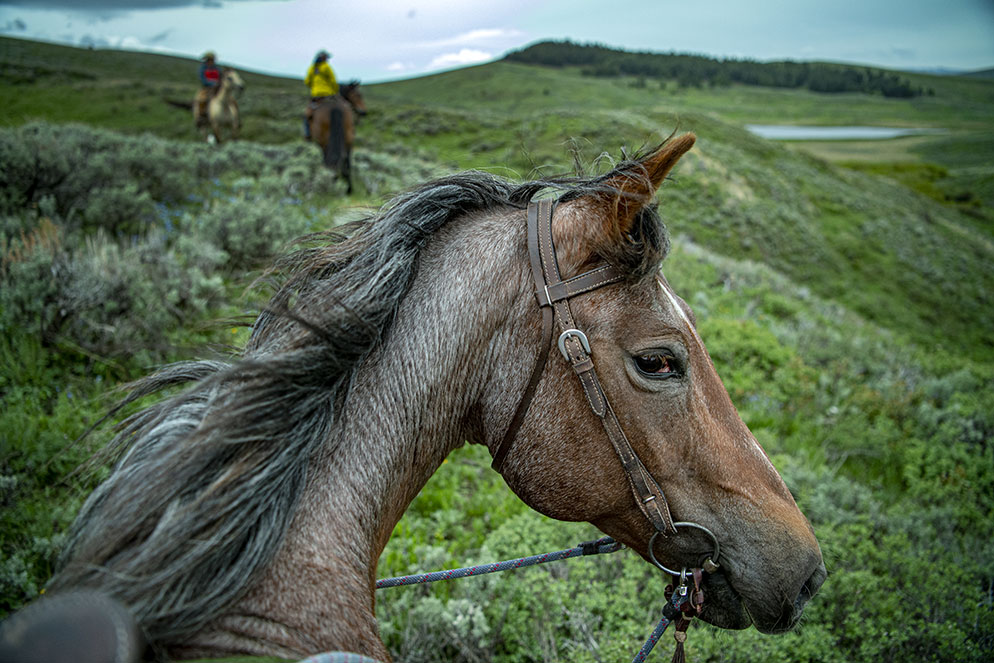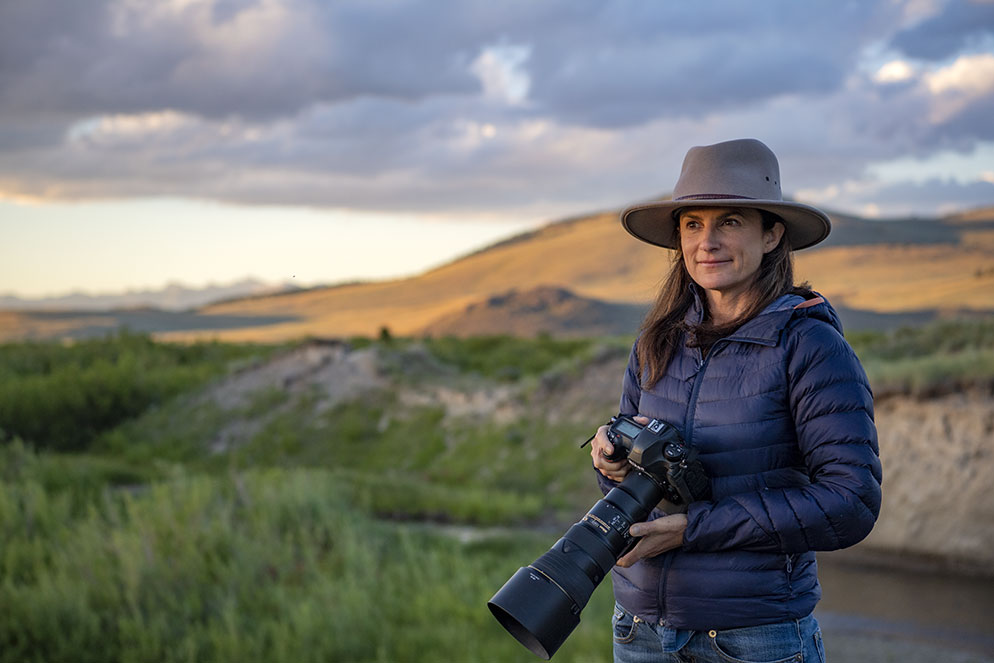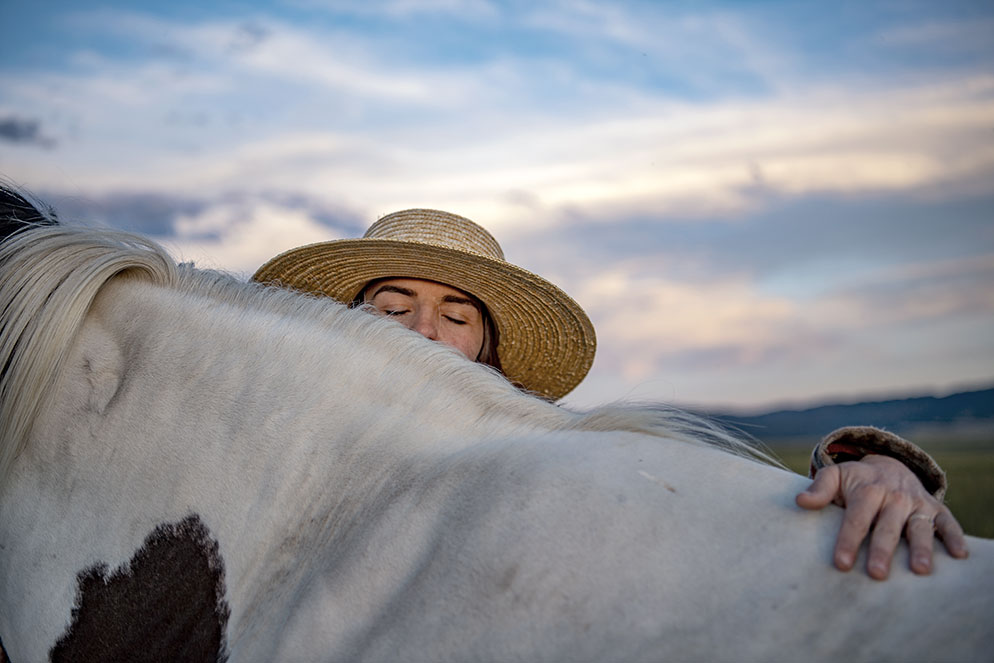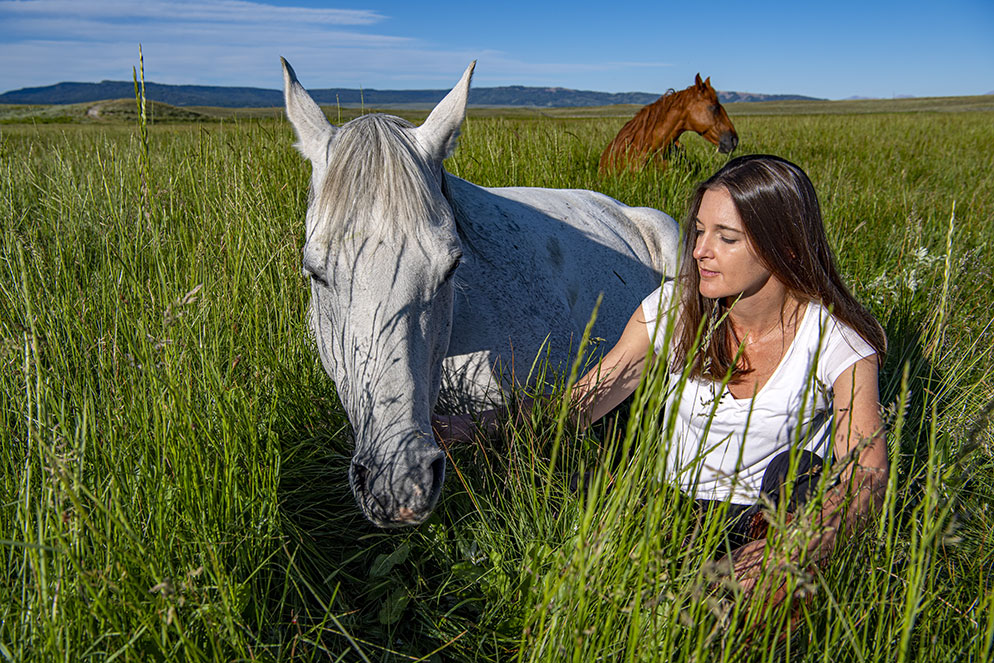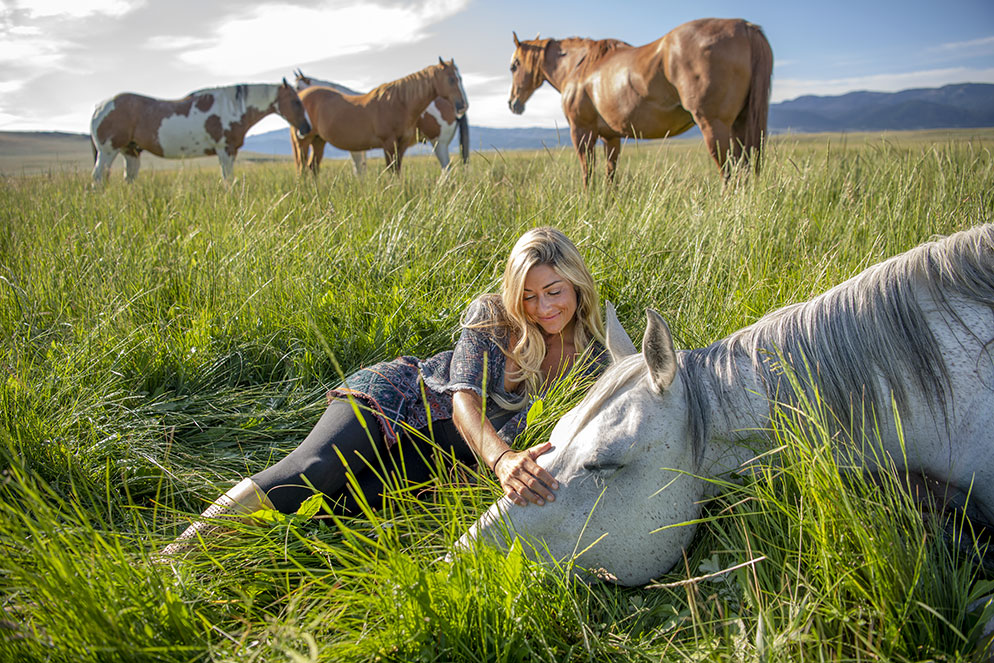On Assignment: Why Nikon's D6 is Ready for Anything
"We're moving," Ami says of this photo she took on horseback at the ranch, reins in one hand, the D6 in the other. "Continuous advance is absolutely necessary to get a good frame," was Ami's deadpan assessment of the image. D6, AF-S NIKKOR 24-70mm f/2.8E ED VR, 1/320 second, f/2.8, ISO 1250, manual exposure, Matrix metering.
You never know what the job's going to throw at you. And so we engineered and built the D6 to the highest level of what pro shooters expect and require: power, precision and performance, no matter if the day brings the anticipated or the surprising, the average or the extreme.
Ami Vitale's take on our top-of-the-line DSLR affirms all of that. Which is interesting, because her first shoot with the D6 didn't require its peak-power performance.
But the next shoot did.
"I had a lot of access to quiet moments like this at the J Bar L Ranch," Ami says. "The amazing thing is, these two are meeting for the first time." Participants in the three-day workshop at the ranch were studying to be therapy instructors. D6, AF-S NIKKOR 24-70mm f/2.8E ED VR, 1/400 second, f/5, ISO 100, manual exposure, Matrix metering.
At the Ranch
Ami is an award-winning photojournalist, a documentary filmmaker and a Nikon Ambassador who approaches her assignments with passion and purpose, often living inside long-form stories that document subjects including the endurance of the human spirit, the changing environment and the survival of endangered species and preservation of their habitats.
Her initial shoot with the D6 was at the J Bar L ranch in Montana's Centennial Valley. It was an easy-access assignment, as Ami has photographed there for years, documenting the ranch's respect for the environment and the habitats of the indigenous wildlife. The ranch also offers tourists the opportunity to rent cabins and explore and enjoy the photogenic expanse of the ranch's 20,000 acres.
Ami's subject for this assignment was a three-day workshop conducted by the Koelle Institute of Equus Coaching, part of the Institute's coaches' training program.
Another quiet, intimate moment during the workshop. The ranch's remote Montana location, its wide-open spaces and maintainable distances permitted the event to take place safely during the pandemic. D6, AF-S NIKKOR 24-70mm f/2.8E ED VR, 1/200 second, f/2.8, ISO 320, manual exposure, Matrix metering.
The shoot gave Ami the opportunity to get used to the camera—which, considering its Nikon heritage and traditional ergonomics, didn't take very long—as well as consider how its capabilities would play into the way she shoots and the subjects she pursues. "I do such a wide range of things," Ami says, "from photojournalism to wildlife, conservation issues to portraiture. I'm known for long-term projects, for spending time in the same communities, so I need a wide range of capabilities."
Of the ranch shoot Ami singled out the camera's overall responsiveness, placing special emphasis on the speed of its autofocus and its 14-frames-per-second frame advance. "It was amazingly fast, and that really helped when I was photographing wildlife racing across the plains at the ranch."
One of the aims of the workshop is to create situations of establishing or regaining trust. "Here the horses wanted to get close, and they just came to her," Ami says. "Part of the teaching is about learning to wait instead of rushing up to animals, and by extension, to people." D6, AF-S NIKKOR 24-70mm f/2.8E ED VR, 1/200 second, f/8, ISO 125, manual exposure, Matrix metering.
The ranch shoot was an exercise in observation, anticipation and reaction. There was no direction, no retakes or staging; events unfolded naturally, revealing photo opportunities.
"It was great to be able to rely on the D6's speed and responsiveness for the shots of antelopes and horses," Ami says, "and for the quiet moments, well, you want the best, most beautiful shots as far as image resolution, color, subtle tones and the capture of light and shadow."
Much of the assignment involved watching for the moments to develop. "I liked the juxtaposition of their heads, crossing like that," Ami says." She was close enough to frame it up perfectly at 48mm. D6, AF-S NIKKOR 24-70mm f/2.8E ED VR, 1/250 second, f/2.8, ISO 100, manual exposure, Matrix metering.
It was great to be able to rely on the D6's speed...and for the quiet moments, well, you want the best, most beautiful shots...
"This was an extraordinary moment," Ami says. "She sat down with that horse, and all the other horses started coming around and lying down. It was as if they wanted the attention as well. They're very social creatures; that's the thing we forget." D6, AF-S NIKKOR 24-70mm f/2.8E ED VR, 1/500 second, f/8, ISO 100, manual exposure, Matrix metering.
The Next Day
Ami's next assignment, which she began the day after we first spoke with her, was something very different.
She told us that "tomorrow morning I'll be going to photograph a native American reservation that's being hit really hard by the pandemic," and she'd be bringing the D6. "There's going to be a lot to do, among a lot of people—activity, motion, quick decisions. I'll have limited time and limited access. The pressure is high, and I have to come back with the shots."
We caught up with her after that shoot to find out how it went. "It was quieter than I'd expected," she says, "but still, I was in a hospital, in a full hazmat suit, with goggles and a mask, and I really needed to know that camera because It was super hard to see what I was photographing. I could barely see the controls, but one thing I love about Nikon is it doesn't matter which Nikon camera I'm using, they're so intuitive and familiar. I just knew by memory and feel."
"That's a sign of complete trust—when the horse put her head down and was so relaxed she closed her eyes. There are thousands of acres in the valley, and there are no restraints on the horses—they can go anywhere." D6, AF-S NIKKOR 24-70mm f/2.8E ED VR, 1/320 second, f/3.2, ISO 100, manual exposure, Matrix metering.
She added that the lighting was quite a challenge. "A lot of dark places with the lights changing room to room; it was work quickly and push the ISO. The camera was incredibly reliable and incredibly consistent in those low-light situations."
With consistency comes confidence. While it was good to be able to shoot that first assignment, with quiet moments that could many times be anticipated, it was the hospital shoot that made the case for the D6. "It's the camera for assignments where there are difficult moments I just can't miss," Ami says. "For the street photography, the photojournalism, the wildlife—anywhere I need fast shutter speeds and super-fast autofocus and frame advance."
Given that, we don't think it's a stretch for us to consider the D6 the right pro tool for the job when the job is anything that might come next.
"She was coming back to the ranch, crossing the creek bridge, and the horse was following," Ami says. "When she stopped, the horse did, too. There's no feeding, no treats; it's just the way it is here." D6, AF-S NIKKOR 24-70mm f/2.8E ED VR, 1/320 second, f/6.3, ISO 100, manual exposure, Matrix metering.

